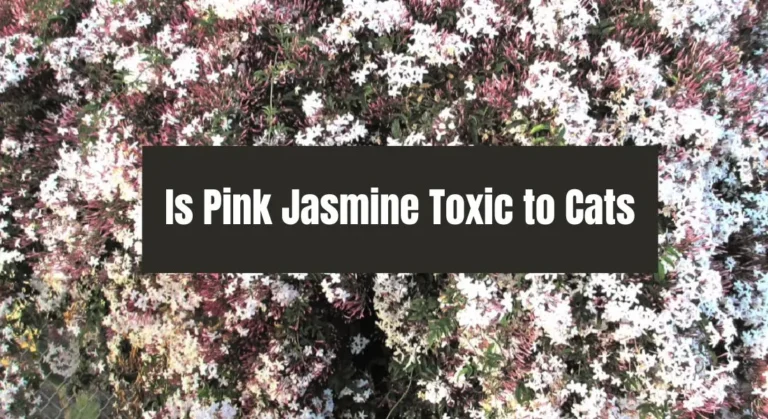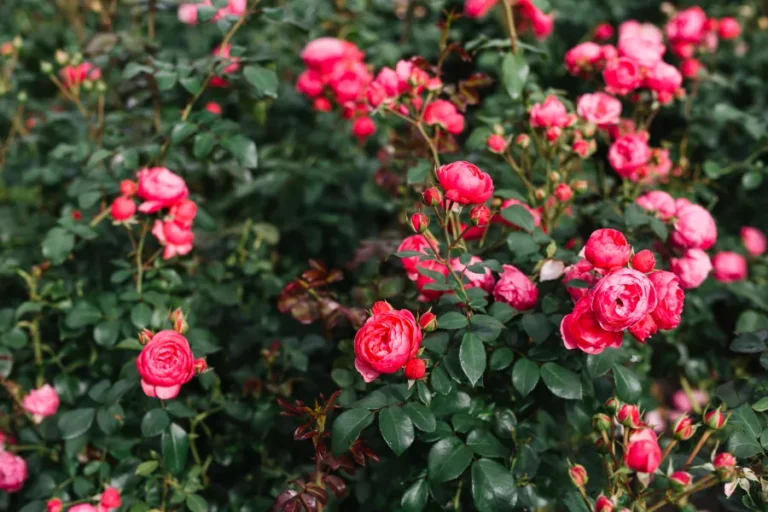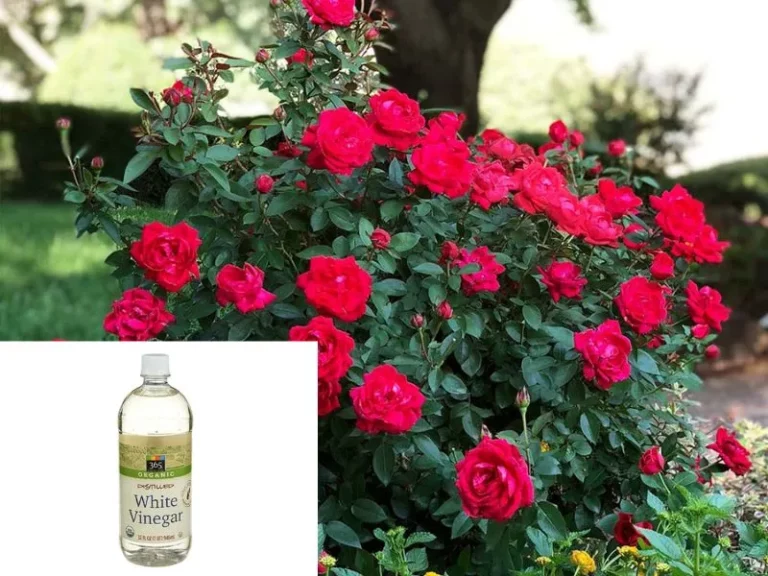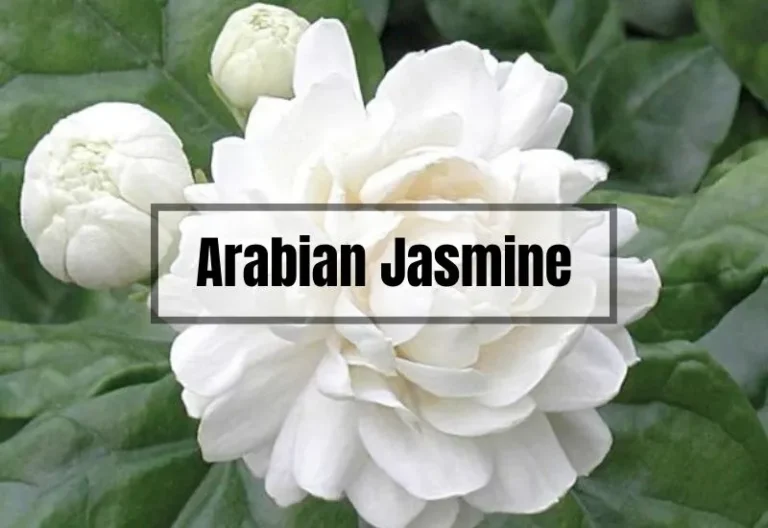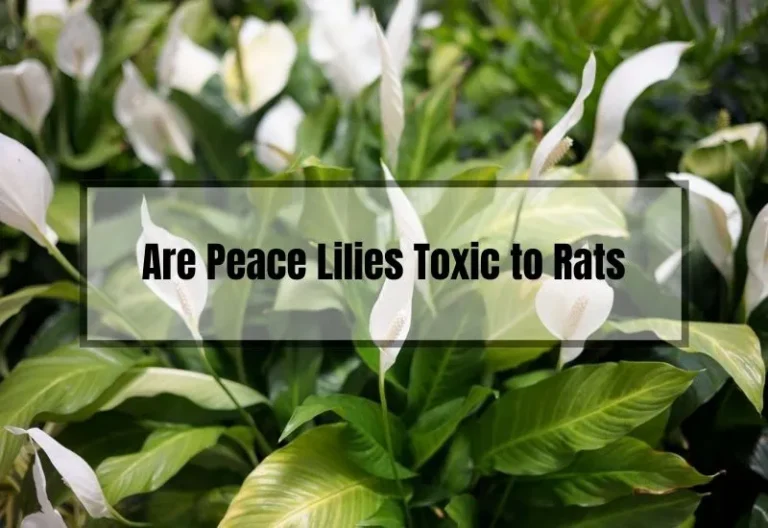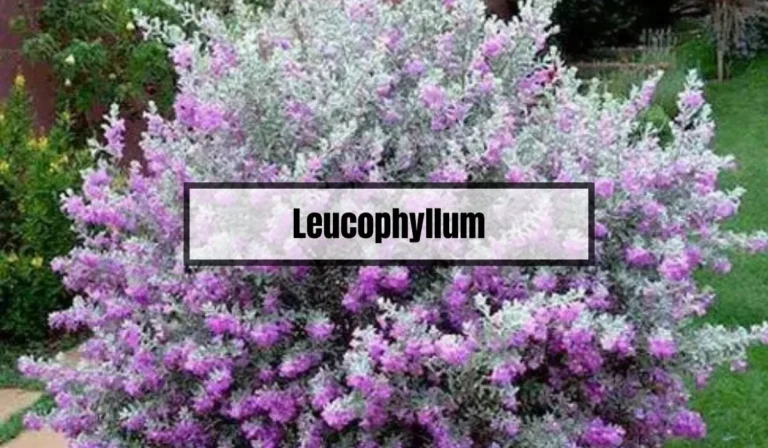What is Rosa Persica : Origin, Uses, Care & Diseases
Rosa Persica, also referred to as the Persian rose or Hulthemia Persica, is a distinct and colorful rose variety that is gaining popularity among gardeners, botanists, and enthusiasts worldwide.
It belongs to the Rosaceae family and has a unique appearance compared to other rose species. The introduction section of the article will provide readers with an overview of what Rosa Persica is, its significance, and the unique characteristics that distinguish it from other roses.
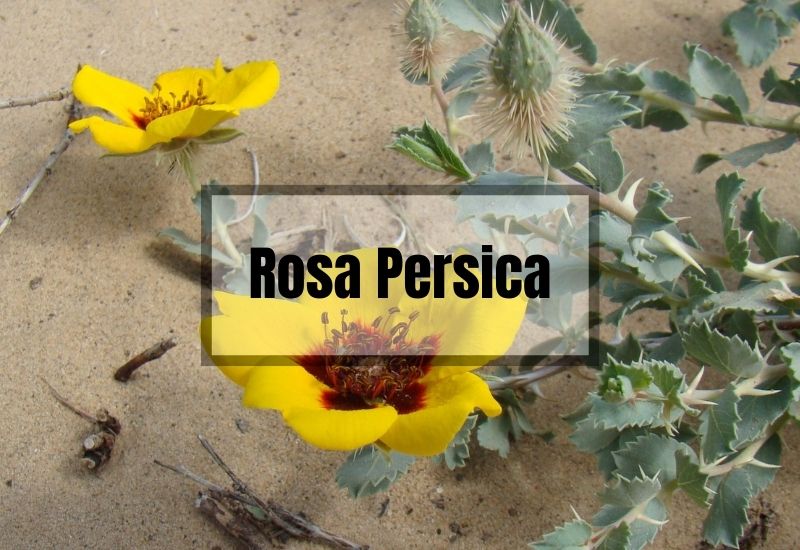
What is Rosa Persica?
Rosa Persica, which is commonly known as the Persian Rose, is a type of flowering plant that belongs to the Rosaceae family. It is indigenous to regions in the Middle East and Central Asia, including Iran, Iraq, and Turkey.
In terms of its physical characteristics, Rosa Persica is a deciduous shrub that produces double-petaled pink flowers with a pleasant fragrance. Typically, it grows to a height of around three to six feet, with a similar spread. It also produces small, round hips that contain seeds, which are usually red or orange in color.
Rosa Persica is classified within the Rosa genus of the Rosaceae family, which also includes various other fruit-bearing and ornamental plants, such as apples, cherries, and strawberries. Additionally, Rosa Persica has a bushy, upright growth habit and green, serrated leaves. Its flowers are usually pink or light pink, and the hips are small and round, similar in size to a pea, and ripen to a red or orange color.
The geographic distribution of Rosa Persica includes its native range in the Middle East and Central Asia, but it has also been introduced to other parts of the world, such as Europe, North America, and Australia, where it is often grown for ornamental purposes. Rosa Persica grows in a variety of habitats within its native range, including forests, meadows, and rocky areas.
Origin and History
Rosa Persica, also known as Persian Rose, has a rich historical background dating back to ancient Persia. The origins of Rosa Persica can be traced back to the Caspian Sea region, where it is believed to have grown in the wild.
The cultivation and domestication of Rosa Persica began in ancient Persia, where it was highly valued for its medicinal properties and ornamental beauty. The rose was also an important symbol in Persian culture, representing love, beauty, and purity.
Over time, Rosa Persica spread to other parts of the world, including Europe and Asia, where it continued to be cultivated and appreciated for its beauty and usefulness. The rose has also played an important role in various religious and cultural traditions, including Christianity and Islam.
Throughout its history, Rosa Persica has undergone various adaptations and evolutions, as it has been crossbred with other rose species and subjected to different growing conditions. Today, there are many different varieties of Rosa Persica, each with its unique characteristics and qualities.
Despite its long history and widespread cultivation, Rosa Persica remains a highly prized and sought-after plant, admired for its beauty, fragrance, and therapeutic properties.
What is the Best Time to Plant Rosa Persica?
The best time to plant Rosa Persica largely depends on the climate and growing conditions of the region. In general, it is recommended to plant Rosa Persica during the dormant season when the plant is not actively growing. This is typically in late autumn or early spring, when the temperatures are cool and there is a higher chance of rainfall.
In warmer regions, where the ground does not freeze during winter, planting can also be done during the winter months. However, in areas with very cold winters, it is advisable to wait until the frost has subsided in the spring before planting.
It is important to note that planting during extremely hot or dry weather should be avoided, as this can stress the plant and increase the risk of transplant shock. Proper soil preparation, adequate watering, and regular fertilization can help ensure the successful establishment of Rosa Persica, regardless of the planting time.
Uses of Rosa Persica
Culinary Uses
Rosa Persica has a lengthy history of being utilized in culinary preparations. Its petals are frequently used to create rose water, which is a sought-after ingredient in Middle Eastern, Indian, and Persian cuisine.
The petals can also be used to enhance the flavor and aroma of various desserts such as cakes, pastries, and ice creams. In addition, the fruit of the plant, known as rose hips, is packed with Vitamin C and is often used to create jams, jellies, and syrups.
Medicinal Uses
For thousands of years, Rosa Persica has been used for medicinal purposes. Its petals, leaves, and hips possess a wide range of therapeutic properties and are used to treat various ailments such as digestive problems, respiratory problems, and skin conditions.
Rose hip oil, for instance, is full of antioxidants and is used to promote healthy skin and prevent wrinkles. Rose tea, made from the petals, is known for its calming effects and is often used to relieve stress and anxiety.
Fragrance and Perfume Industry
The sweet, floral scent of Rosa Persica makes it highly prized in the fragrance and perfume industry. The essential oil derived from the petals is used as a base for many perfumes and cosmetics.
Furthermore, rose water obtained from the plant is used as a natural fragrance in a variety of cosmetic products such as toners and face mists.
Ornamental Purposes
Rosa Persica is an exquisite ornamental plant that is frequently grown in gardens and parks for its stunning flowers. Its deep pink blooms and delicate fragrance make it a popular choice for decorative purposes.
Additionally, the plant can be trained to grow on trellises, arches, and walls, making it a versatile addition to any landscape design.
Can Rosa Persica be Used to Make Essential Oils?
Yes, Rosa Persica can be used to make essential oils. The fragrant flowers of the plant are steam distilled to extract the essential oil. Rosa Persica essential oil is known for its sweet and floral aroma and is used in the fragrance industry to create perfumes, soaps, and candles. The oil is also used in aromatherapy to promote relaxation and reduce stress.
Rosa Persica essential oil is rich in antioxidants and has antimicrobial properties. It is used in skincare products to help rejuvenate and hydrate the skin, reduce the appearance of fine lines and wrinkles, and soothe skin irritations.
When using essential oils, it is important to dilute them with a carrier oil before applying them to the skin. Undiluted essential oils can cause skin irritation or allergic reactions. It is also recommended to do a patch test before using any new essential oil to ensure that you do not have an allergic reaction.
Overall, Rosa Persica essential oil is a versatile and valuable ingredient with many potential benefits for skincare and aromatherapy.
Cultivation and Care of Rosa Persica
Climate and Soil Requirements
Rosa Persica grows well in a temperate climate and prefers an average temperature range of 15-20°C. Although it can tolerate colder temperatures, it cannot tolerate extreme heat.
To grow healthy and strong, the plant requires well-drained, fertile soil with a pH range of 6.0-7.0. The soil should be rich in organic matter and nutrients.
Planting and Propagation
Rosa Persica can be propagated through seeds, cuttings, and grafting. Seeds can be sown directly into the soil during the spring or fall seasons. Cuttings can be taken from semi-hardwood stems during the summer, dipped in rooting hormone, and then planted in well-draining soil. Grafting is another method of propagation where the Rosa Persica stem is joined with the rootstock of another rose plant.
When planting Rosa Persica, it is important to choose a location that receives at least 6 hours of direct sunlight per day. The plant should be spaced at least 3 feet apart from other plants to ensure adequate air circulation.
Watering and Fertilization
Rosa Persica requires regular watering, especially during the first year after planting. It is important to water the plant deeply once or twice a week, depending on the soil moisture level. During the summer season, it is important to water the plant more frequently to prevent drought stress.
To promote growth and ensure the health of the plant, fertilization is also necessary. A balanced fertilizer with equal amounts of nitrogen, phosphorus, and potassium should be applied in early spring and mid-summer. Organic fertilizers, such as compost and manure, can also be used to improve soil fertility.
Pruning and Training
To maintain the shape and health of Rosa Persica, pruning is necessary. Dead or diseased branches should be removed as soon as they are noticed. Pruning should be done during the late winter or early spring to encourage new growth and flowering.
Pruning is also necessary for training Rosa Persica to grow in a specific direction or shape. This is especially important for climbing varieties, which require support structures to grow vertically.
Common Pests and Diseases
Rosa Persica is susceptible to a range of pests and diseases, including aphids, spider mites, powdery mildew, and black spot. To prevent these problems, it is important to maintain good plant hygiene by removing fallen leaves and debris, as well as avoiding overhead watering.
In addition, organic pesticides and fungicides can be used to control infestations.
- Aphids: These small, soft-bodied insects can cause damage to the plant by sucking sap from the leaves and stems. They can be controlled with insecticidal soap or neem oil.
- Spider Mites: These tiny pests can cause leaves to turn yellow and dry up. They can be controlled by washing the plant with a strong spray of water or using insecticidal soap.
- Powdery Mildew: This fungal disease appears as a white or gray powdery coating on the leaves and stems. It can be prevented by maintaining good air circulation and avoiding overhead watering. Fungicides can also be used to control the disease.
- Black Spot: This fungal disease causes black spots to appear on the leaves, eventually causing them to drop off. It can be prevented by planting disease-resistant varieties and maintaining good plant hygiene. Fungicides can also be used to control the disease.
In addition to these pests and diseases, Rosa Persica can also be affected by environmental stressors such as drought, frost, and extreme heat. It is important to monitor the plant regularly for signs of stress and take appropriate action to mitigate the problem.
Common Diseases and Remedies
When it comes to caring for your Rosa Persica plant, it is essential to be mindful of the different types of diseases that can impact its health.
In this section, we will explore the various diseases that can affect the plant, their symptoms and causes, and prevention and treatment options.
Types of Diseases
There are several diseases that can affect Rosa Persica, including:
- Blackspot: This is a fungal disease that manifests as black spots on the leaves, leading to premature yellowing and leaf drop.
- Powdery mildew: This is another fungal disease that creates a white, powdery coating on the leaves and can affect the stems and flowers of the plant.
- Rust: This disease appears as orange or rust-colored spots on the leaves and can lead to yellowing and leaf drop.
- Crown gall: This bacterial disease causes tumors to form on the roots and lower stems of the plant.
Symptoms and Causes
The symptoms of these diseases may vary, but typically involve the discoloration and deformation of the leaves, stems, and flowers. In some cases, the plant may display stunted growth or an overall weakened appearance.
The causes of these diseases also vary. Fungal diseases may develop due to excessive moisture on the plant, while bacterial infections can result from injuries such as pruning cuts.
Prevention and Treatment Options
Preventing diseases from affecting your Rosa Persica plant is crucial in promoting its longevity and health. Here are some prevention and treatment options to consider:
- Proper sanitation: Keep the area surrounding your plant clean and free from debris, and refrain from planting new plants in contaminated soil.
- Good watering practices: Avoid wetting the leaves and stems of the plant, as this can encourage the growth of fungal diseases. Instead, water the plant at its base.
- Fungicides: There are various fungicides that can be applied to the plant to prevent and treat fungal diseases.
- Antibiotics: In cases of bacterial infections, antibiotics may be necessary to treat the plant. However, prevention is the key to avoid these types of infections.
By staying mindful of the various diseases that can affect your Rosa Persica plant and taking steps to prevent and treat them, you can help guarantee its health and vibrancy for years to come.
Can Rosa Persica be Grown Indoors?
Rosa persica can be grown indoors, but it requires a lot of sunlight and space to thrive. It’s best to grow it in a large pot with well-draining soil and to provide it with plenty of sunlight.
Additionally, it’s important to monitor the plant for any signs of pests or diseases, as these can spread quickly in indoor environments.
Frequently Asked Questions (FAQs)
What makes Rosa Persica different from other rose species?
Rosa Persica is a species of rose that is native to the Middle East, particularly Iran. This type of rose stands out from other species due to its unique physical characteristics, growth habits, and cultural requirements. Rosa Persica has smaller flowers and leaves compared to other types of roses and tends to grow in a more shrubby form. Additionally, Rosa Persica requires specific soil and climate conditions that are different from other types of roses.
How can I incorporate Rosa Persica into my garden?
If you plan on adding Rosa Persica to your garden, there are certain factors you need to consider. The first is ensuring that the soil and climate conditions in your garden are appropriate for the plant. Rosa Persica thrives in well-drained soil with a slightly acidic pH and requires plenty of sunlight. You can add Rosa Persica to your garden by planting it as a specimen plant, incorporating it into a mixed border, growing it in containers, or training it as a hedge or topiary.
Is Rosa Persica safe for consumption?
Although Rosa Persica is used in traditional medicines and culinary dishes, not all parts of the plant are safe for consumption. Typically, only the petals of the flower are edible and are used to make rose water and desserts. Ingesting other parts of the plant, such as the seeds and roots, can be toxic. Before using any herbal remedies containing Rosa Persica, it is best to consult with a healthcare professional.
Can Rosa Persica grow in a tropical climate?
Rosa Persica is a robust plant that thrives in temperate climates with distinct seasons. It prefers cool winters and warm summers and can withstand some frost. While it may be possible to grow Rosa Persica in a tropical climate, it will require extra care and protection to survive in hot, humid conditions.
What are the common diseases that affect Rosa Persica?
Like all plants, Rosa Persica is susceptible to diseases and pests. Common diseases that can affect this plant include black spot, powdery mildew, and rust. These diseases can harm the leaves, flowers, and stems of the plant and can cause a decline in health or death. Regularly monitoring your Rosa Persica for signs of disease and taking appropriate measures, such as using fungicides or other treatments, removing infected plant material, or adjusting your watering and fertilization practices, can prevent or treat any issues that arise.
Conclusion
In conclusion, Rosa persica is a unique species of rose with distinctive characteristics and an interesting history. While it may be difficult to grow in gardens, it can be grown in pots and has potential uses such as fuel and hybridisation. Proper care and maintenance can help prevent diseases and ensure that Rosa persica thrives.
If you’re interested in growing this unique species of rose, remember to give it the care and attention it needs to flourish. With patience and dedication, you’ll be rewarded with a stunning and unique addition to your garden. So, get planting and let’s see those beautiful Rosa persica blooms!
Related Posts:

